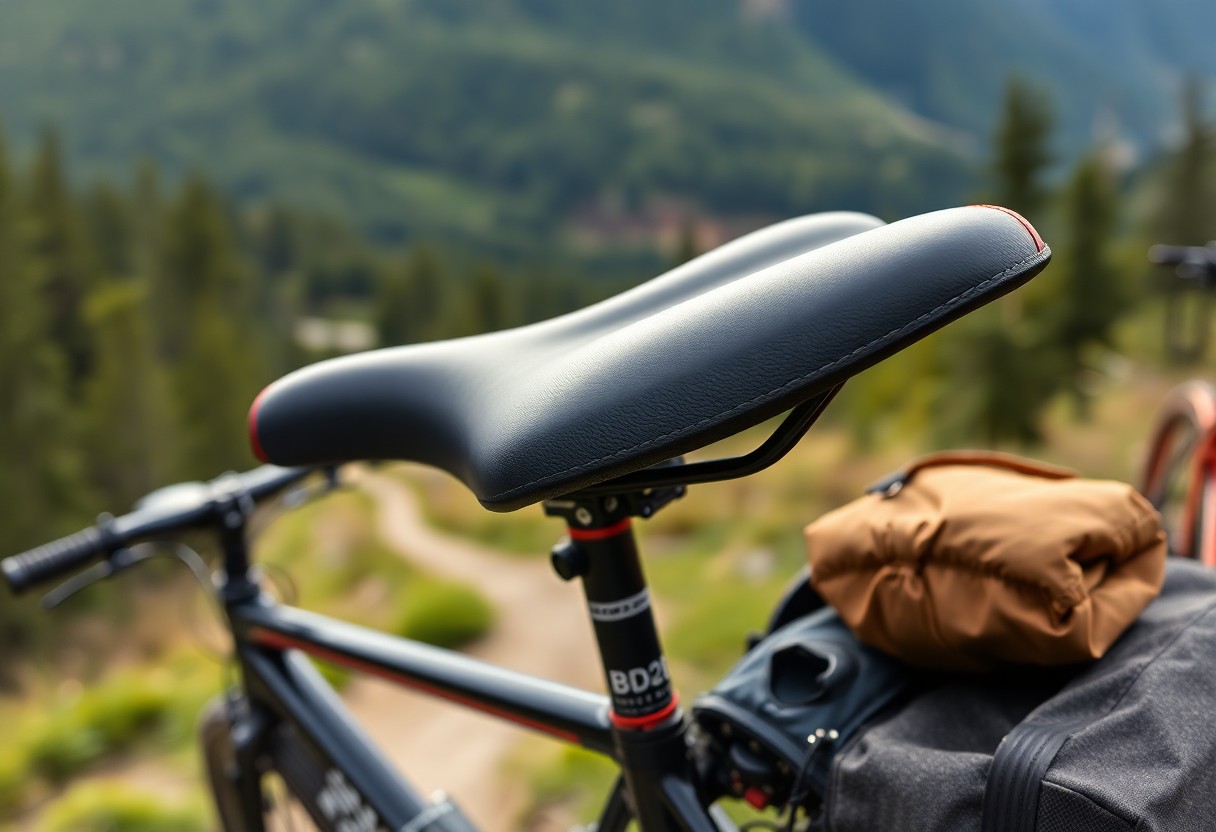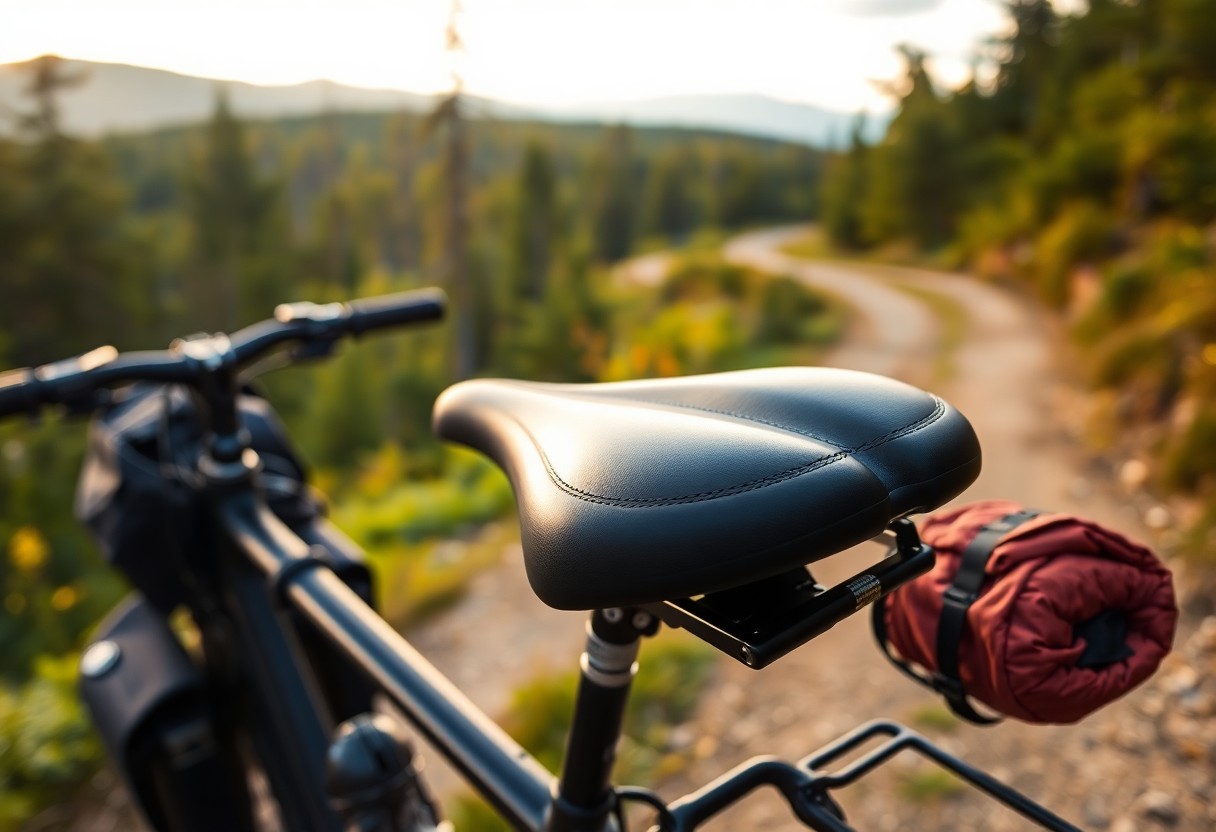Long-distance bikepacking requires not just endurance, but also the right gear to support your journey. Your saddle is a key factor in ensuring comfort and reducing the risk of injuries during those long hours in the saddle. Choosing the wrong saddle can lead to discomfort and fatigue, ruining your experience. This guide will help you navigate the myriad of options available, highlighting features that contribute to a smooth ride, so you can focus on enjoying the adventure ahead.
Prioritising Comfort: Anatomy of a Great Long-Distance Saddle
Finding the perfect saddle is vital for enhancing your comfort on lengthy rides. The anatomy of a great long-distance saddle encompasses a balance of materials, shape, and design features that cater specifically to extended periods of sitting. A well-designed saddle evenly distributes your weight, minimises pressure points, and allows for adequate moisture management, ensuring your ride remains pleasant throughout the journey.
Key Features for Endurance Riding
Look out for the following key features when choosing your long-distance saddle:
- Padding Thickness: Optimal cushioning to absorb road vibrations.
- Wide Nose: Reduces chafing and provides freedom of movement.
- Channel Design: Alleviates pressure on sensitive areas.
- Material Quality: Durable fabrics that withstand long hours of use.
- Frame Structure: Lightweight yet supportive for enhanced performance.
- Customisable Fit: Adaptable features such as adjustable nose width.
Any saddle that incorporates these features will significantly increase your comfort on those lengthy bikepacking adventures.
Padding and Support: Finding the Perfect Balance
The right amount of padding is integral to achieving comfort, as too little can lead to discomfort while too much can hinder your ability to move and pedal effectively. Seek a saddle that utilises high-quality padding materials, which offer both support and flexibility. Additionally, consider the surface texture; a saddle with a non-slip finish helps keep you in place. Testing out different padding levels through rides of varying lengths can help determine what feels best for you, leading to a more enjoyable bikepacking experience.

The Role of Fit: Personalisation for Maximum Efficiency
Achieving the perfect fit for your saddle enhances comfort and maximises efficiency on long rides. A tailored fit allows you to optimise power transfer and ride longer without discomfort. Individual anatomy and riding style necessitate a saddle that aligns with your personal measurements, encouraging proper posture and reducing fatigue. Finding the right saddle involves more than just picking a brand; it demands a careful assessment of your body’s unique dimensions.
Measuring Saddle Width and Length
The width of your saddle should correspond to your sit bone distance, typically measured in millimetres. To find this, you can sit on a flat, hard surface and create an impression, allowing you to determine the space between your sit bones. Length is also significant, with longer saddles providing more room for movement during various riding positions. A saddle that’s too narrow can lead to discomfort, while one that’s excessively wide may hinder pedalling efficiency.
Adjusting for Riding Position and Style
Adjusting your saddle for your riding position and style involves considering how you lean over the bike. Riders who adopt an aggressive posture may require a firmer saddle with a narrower profile, while more upright riders often benefit from wider options for additional support. Aim for a balance between comfort and performance; a slight tilt of the saddle nose can significantly affect your pelvic rotation and lower back strain.
The tilt of your saddle is a subtle yet vital factor that can dramatically impact your riding experience. A saddle positioned too high or low can lead to knee pain, while an improper angle might cause pressure in sensitive areas. For long-distance bikepacking, a slight upwards tilt may alleviate pressure on the perineum, enhancing blood flow and reducing the likelihood of numbness. You should also adjust the fore-aft position; shifting the saddle forward can improve riding efficiency, especially during climbs, while moving it back may provide stability on descents. Experimenting with these adjustments will help you find the ideal configuration that supports your riding style and keeps you pedalling comfortably for miles.
Material Matters: How Saddle Composition Affects Performance
The material used in saddle construction significantly influences performance, comfort, and longevity. Your choice between various materials can impact the overall riding experience, particularly during long-distance rides where small details can make a big difference. For instance, some materials provide better shock absorption, while others excel in breathability or reduce overall weight. As you consider your options, understanding these differences can guide you to a saddle that better suits your riding style and preferences.
Leather vs. Synthetic: Weight, Durability, and Comfort
Leather saddles typically offer remarkable durability and a unique comfort that moulds over time to the rider’s shape. However, they tend to be heavier and require more care than their synthetic counterparts. Synthetic saddles, on the other hand, are often lighter and resistant to weather conditions, but may lack the traditional comfort feel of leather. Depending on your priorities—whether it be weight savings or a more personalised fit—your choice of material can enhance or detract from your bikepacking experience.
Ventilation and Waterproofing: Importance in Diverse Conditions
Choosing a saddle with proper ventilation and waterproofing features ensures comfort across varying weather conditions. Effective ventilation helps prevent sweat build-up, promoting airflow during warm rides, whilst waterproof materials safeguard against rain and muck, keeping you dry. A saddle engineered with these considerations ensures that you can focus on the journey ahead, regardless of the elements.
When riding through unpredictable weather or challenging terrains, effective ventilation features are imperative for maintaining your comfort. Comfort is compromised when heat and moisture accumulate, leading to chafing or soreness. Saddles designed with airflow channels or breathable materials help mitigate this problem, allowing sweat to escape and keeping you cooler. Furthermore, waterproofing is not just about staying dry; it’s about ensuring that your saddle maintains its integrity and performance over time. Waterproof materials protect against mud and water, which are common in bikepacking adventures. With these elements in mind, you can confidently tackle whatever nature throws at you without compromising on comfort.
The Impact of Shape: Understanding Different Saddle Designs
The shape of your saddle plays a pivotal role in comfort and performance, particularly over long distances. Variations in design influence how your weight is distributed across the saddle, which affects overall stability and pressure points. It’s not just about aesthetics; the right saddle shape aligns with your riding position and can significantly enhance your endurance on long bikepacking trips. Understanding the nuances between designs empowers you to make a more informed choice, leading to a more enjoyable journey.
Flat vs. Curved: Which Suits Your Riding Style?
Choosing between a flat or curved saddle depends on your individual riding style and position. Flat saddles often provide a stable platform, ideal for more aggressive riding or when you’re frequently shifting positions. Conversely, curved saddles can offer better ergonomics for a relaxed posture, distributing weight evenly and reducing discomfort on long rides. Assessing your typical riding style will help determine which shape complements your needs better.
Cutouts and Channels: Their Role in Pressure Relief
Cutouts and channels are designed to alleviate pressure on sensitive areas while riding. By allowing for enhanced blood flow and reducing numbness, these features help you stay comfortable during extended bikepacking trips. A well-placed cutout can make a significant difference, particularly for those spending hours in the saddle, as it targets key areas impacted by prolonged pressure.
For instance, many riders find that saddles with a central cutout can allow for increased airflow and ventilation, optimising comfort over long distances. Brands like Selle Italia and Fizik offer models with innovative channel designs that cater to varying levels of intensity and riding posture. Choosing a saddle featuring these elements can greatly enhance your riding experience, minimising discomfort and allowing you to focus on the adventure ahead.
Enhancing Function: Accessories and Upgrades for Long Rides
Maximising comfort and performance during long rides often hinges on thoughtful accessories and upgrades. Consider investing in a high-quality handlebar bag for easy access to imperatives, or a robust frame bag to distribute weight evenly. Add a reliable multi-tool to handle any unforeseen repairs, and don’t underestimate the value of a good set of lights for safety during those extended hours on the road.
The Importance of Proper Bike Fitting and Position
Achieving the right bike fit significantly impacts your ride quality and endurance. A tailored fit ensures that you can pedal effectively and comfortably, reducing strain on your back and legs. Adjustments to saddle height, angle, and reach can eliminate discomfort, allowing you to ride for longer periods without fatigue or injury.
Additional Accessories: Padded Shorts and Supports
Padded shorts are a game changer for those who clock up the miles. They offer cushioning in all the right places, reducing friction and the dreaded saddle sore. Paired with supports like chamois creams, these accessories provide an extra layer of defence against discomfort. Investing in quality padded shorts made from breathable materials can significantly enhance your overall riding experience.
The benefit of padded shorts isn’t just about immediate comfort; they also help manage long-term health by reducing pressure and irritation. Look for shorts with silicone leg grippers to prevent bunching and seams designed to minimise chafing. Many cyclists find that a quality pair can help sustain their ride enjoyment, easily justifying the investment for those extensive bikepacking adventures.
Summing up
Now that you are equipped with knowledge about the best saddles for long-distance bikepacking, you can make an informed decision that enhances your comfort and riding experience. Focus on finding a saddle that balances support and flexibility, while considering factors such as padding, width, and materials. Ultimately, the right saddle will help you tackle those extended miles with confidence, ensuring that your journey is as enjoyable as it is rewarding.
